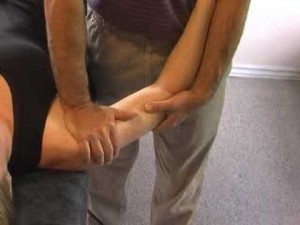I get asked by many therapists, what makes L.A.S.T. any different from Joint Play/Mobilization? Is one any better to use in treatment than the other? Unfortunately the answer isn’t simple, but let’s attempt to answer these questions in a way that the therapist will understand.
First let’s compare and contrast both techniques.
Joint play/mobilization
Joint play/mobilization techniques have been utilized by Manual Practitioners for many years. These techniques are most commonly associated with restoring a range of motion of a joint.

In utilizing Joint Mobilizations, the Manual Therapist has the option to utilize either a Direct or Indirect application. Direct joint mobilization techniques are applied directly to the joint, and not directed through other joints above or below the involved targeted area. An Indirect joint mobilization is performed distal or proximal to the involved area or through a long lever. An example would be pulling on the leg to traction the facets of the lumbar spine.
Concerning Joint Play, the focus of treatment is the motion that is available between two articular surfaces in one direction. Joint play is performed in the direction of glide. The Therapist will mobilize the distal on the proximal articular surface if possible. An example would be when one articular surface slides on the other articular structure but no osteokinematic motion has occurred; no change in flexion, extension, abduction, adduction etc.
Joint Play has Grades of Sustained Glides or Traction Manipulations. Grade 1 & 2 are non corrective while Grade 3 is used as a corrective technique to stretch joint capsules and restore the glides within the joint. Grades of Oscillations range from 1-4 with 5 being a High velocity, small amplitude, non-oscillatory movement that starts at the tissue resistance and follows through in a thrust manipulation, commonly known as the chiropractic thrust.
Joint play/mobilizations are avoided when the joint surfaces are fully approximated or if the patient is experiencing pain or any neurological symptoms.
Ligamentous Articular Strain Technique (L.A.S.T.)
While joint play/mobilization is focused on one single joint and treating the dysfunction with-in it, L.A.S.T. focuses are always systemic, treating locally to create a systemic reaction.
Most therapists will disengage the opposing articular surfaces of the joint before they go in the direction of ease. Were L.A.S.T. differs, is it Disengages the tissue by going in the direction of ease and continually working in the direction of ease until coming to a point of suspension or balance rather than working against a barrier.. The disengagement process takes place through all planes of motion, not on a particular axis within a joint.
L.A.S.T. like Joint play/mobilization, also has a Direct and Indirect application.

Through manual manipulation we can perceive changes in patients tissues which are changes within the afferent mechanoreceptors found within the tissues. In applying this technique, the manual therapist senses the Reciprocal Tension or the normal tensile forces within the connective tissue. Using alert, observational palpatory skills, the therapist senses the functions and dysfunctions from within the patient, utilizing the motive energy deep within the tissues themselves.
By gently yet firmly loading into the specific tissue, we feel for the reciprocal tension of the tissue. Instead of forcing through the barrier of tissue, directing a release as we see fit, we come to just before the barrier and allow the tissue to release in the direction of ease (Indirect Technique.) In some circumstances though, the tissue requires that we match the reciprocal tension in the tissue and wait for the balance to occur (Direct Technique.)
L.A.S.T. also may utilize thoracic respiration to discern the pattern of dysfunction. This technique of utilizing respiration can also be incorporated into either Direct, Indirect techniques or the combination of both.
When to use one of the other? The tissue determines the course of treatment and in many cases; both Indirect and Direct techniques are utilized in order to bring balance to the tissue/system.
L.A.S.T. is a principle based technique. Disengage, Exaggerate, Balance. The therapist Disengages (direct /indirect techniques or a combination of both) the tissue, through all planes of motion, not on any particular axis within a joint in the direction of ease. This is known as an Exaggeration. The technique is held there until you come to a point of suspension; a neutral position or Balance. Once a neutral point or balance point has been met, the therapist will wait in that position until a softening of the tissues occurs. Once the tissue has completed balancing, the therapist will re-assess the motion permitted within the joint.
Breaking the Pain Tension Cycle

As L.A.S.T. works with the reciprocal tension of all tissues, it is safe to use on patients experiencing pain and neurological symptoms. L.A.S.T. takes advantage of the Ligamento-muscular reflex of the body, breaking the pain tension cycle, and is able to change the Autonomic Nervous System (ANS) from being in a sympathetic (fight or flight) state to a parasympathetic state (rest & digest.) With the ANS balanced, the patients pain levels decrease. This is how L.A.S.T. is capable of being a local application and having a systemic reaction.
As you can see, both may appear on the outside to be similar, but looking at principles and techniques applied, they are very different.
Is one any better to use in treatment than the other?
No. All techniques have their certain place and time. The therapist must use their education and knowledge of the patients history, injury or condition to best decide when a certain technique is indicated. Patients benefit greatly when a combination of techniques are utilized by a skilled therapist. It’s always good to have many tools to choose from when treating patients.